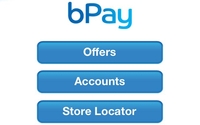 The serious money in mobile payments is mostly behind the
scenes and mobile wallets may not be far behind.
The serious money in mobile payments is mostly behind the
scenes and mobile wallets may not be far behind.
Sure, there are the transactions and processing fees that happen after a credit card sale, and most of those are not likely to go
away any time soon no matter the payment device.
But then there is the dynamic of aggregation.
There is what I call aggregation on the top, where a
company aggregates others, with itself becoming the prime, consumer-facing vehicle.
Over-the-top aggregators include Shopkick, which aggregates retailers like Walmart, BestBuy and
Target and Google Wallet, which aggregates various credit card brands under its umbrella.
Then there is aggregation on the bottom. For mobile transactions, this can create
essentially the same ultimate result, but the aggregator is never seen.
This dawned on me in a conversation I was having with Chris Gardner, co-founder of Boston-based Paydiant, a
company most people have never heard of.
The company just inked a deal with Pulse, part of Discover Financial Services, for Pulse to market Paydiant’s mobile
wallet platform to its 6,000 financial institution customers. Paydiant already had similar deals with Diebold and FIS and is in trials with retailers and banks, including Bank of America.
What strikes me as the big play here is that the retailer incorporates the technology into their own apps, converting those apps into mobile wallets.
Paydiant is hardly
the first company to provide behind-the-scenes mobile technology.
As but one example, unseen technology from Retailigence powers many retailers’ apps to check inventory in
real time so a mobile shopper knows where she can get the product now, before wasting time going to a store that doesn’t have it.
In the case of mobile payments, the
interesting element of the Paydiant approach is that the brand retains their customer connection and the shopper can stick with the app all the way from in-aisle research to payment at
checkout.
At checkout, a QR code can be displayed at the checkout terminal, a consumer does a quick scan and pays via phone. At a restaurant, the code can be automatically added on
each bill, allowing the consumer to scan and go.
The technology can be included by the bank behind a credit card, the retailer’s app or both.
“We’re bringing banks and retailers together,” said Gardner, adding that more than 60 retailers nationally already are using the mobile wallet system. “We’re
building an eco-system.”
One of the banks using the system is Barclays through its bPay app, which after entering credit card information one time, takes a four-digit
passcode to pay and that’s pretty much it.
Rather than one, major-branded mobile wallet, consumers may find themselves using many different wallets, though to them, it may
look like just one.
Some of the technology around mobile commerce sometimes is best left unseen.